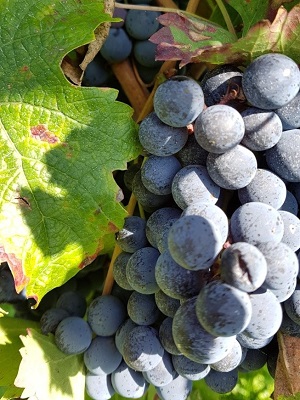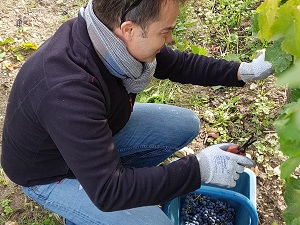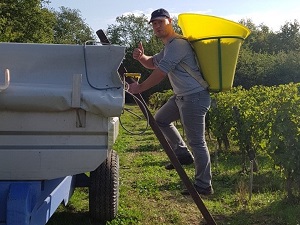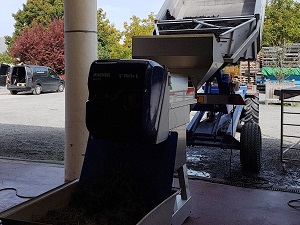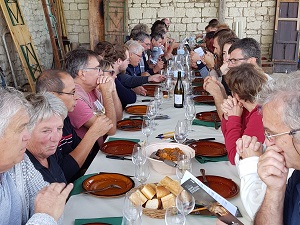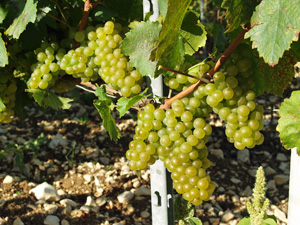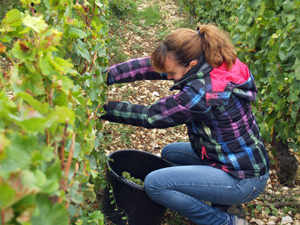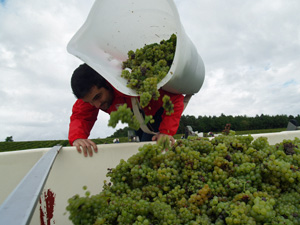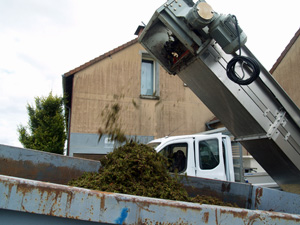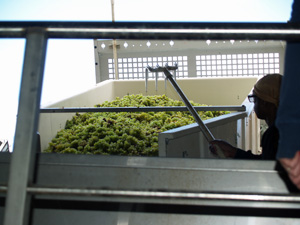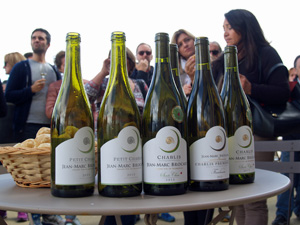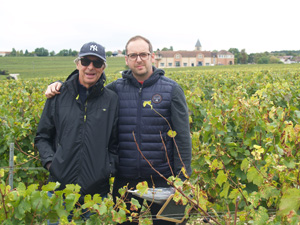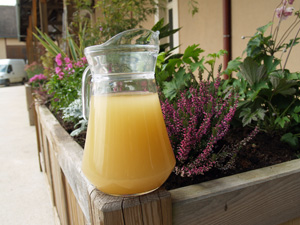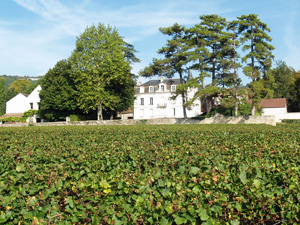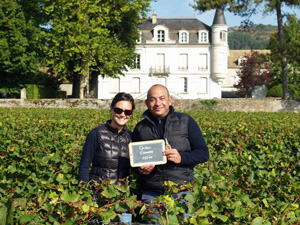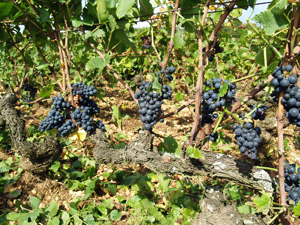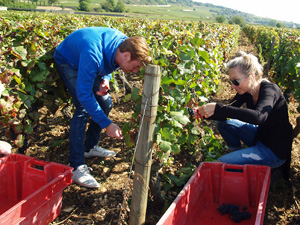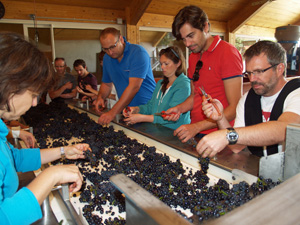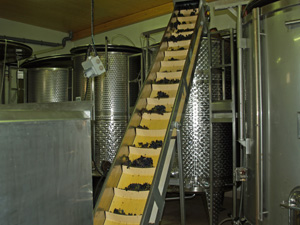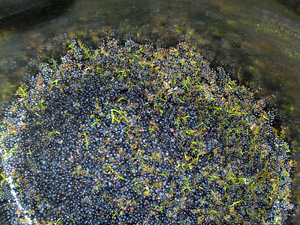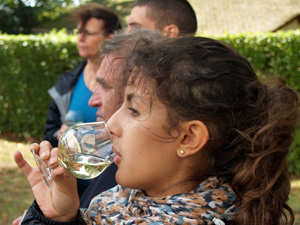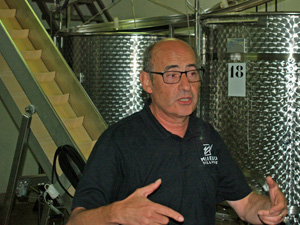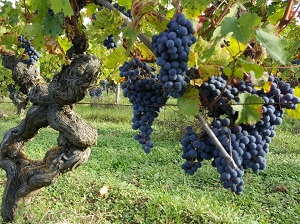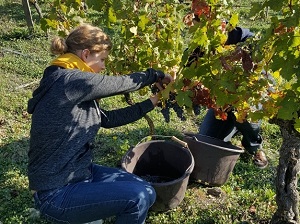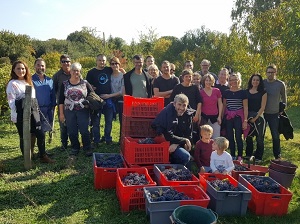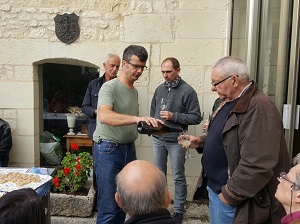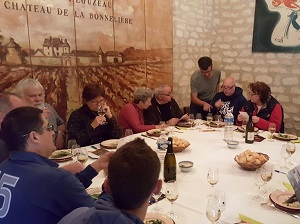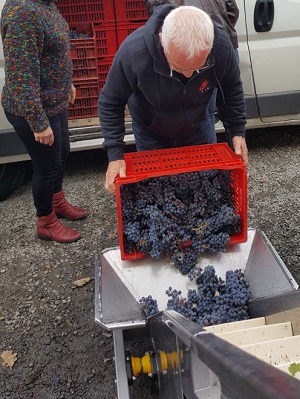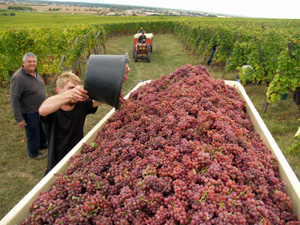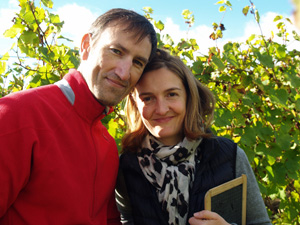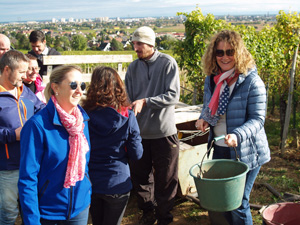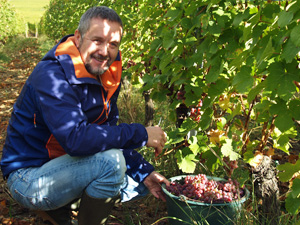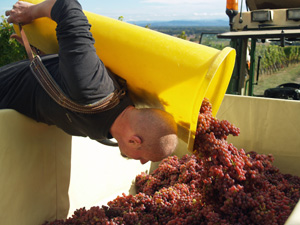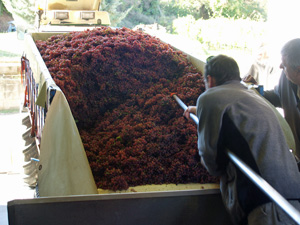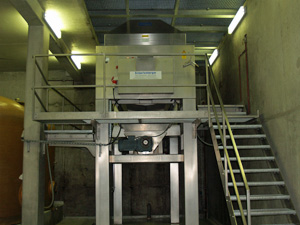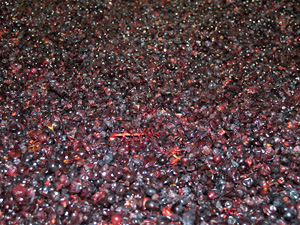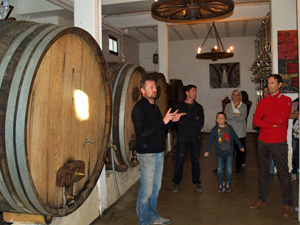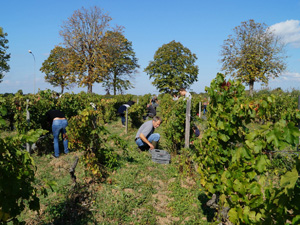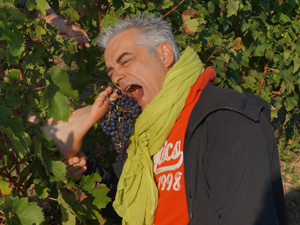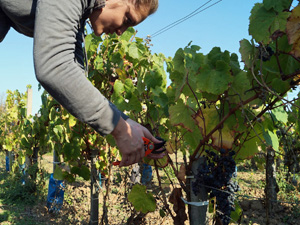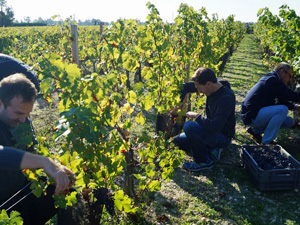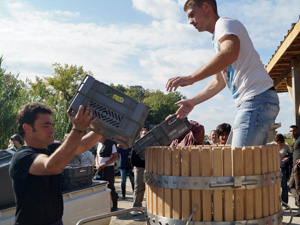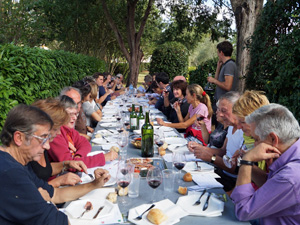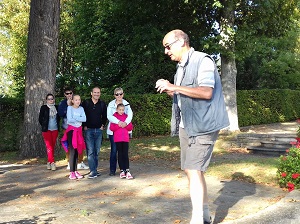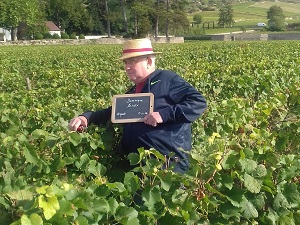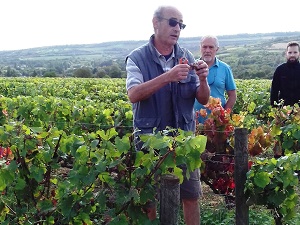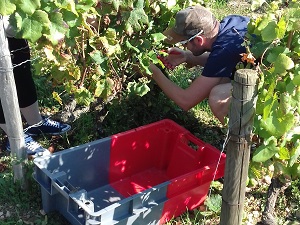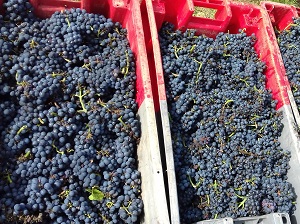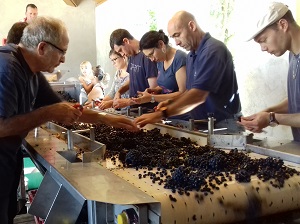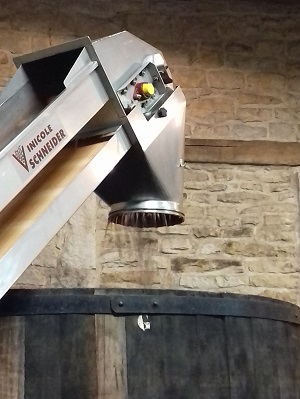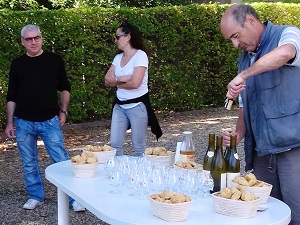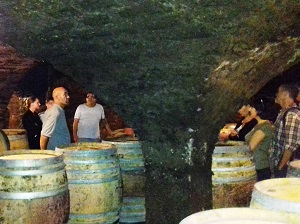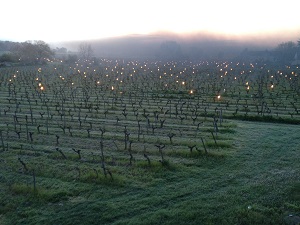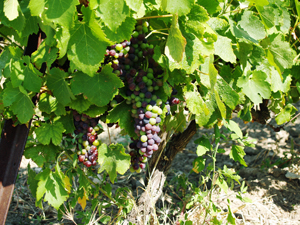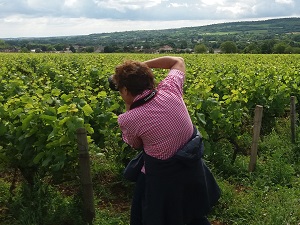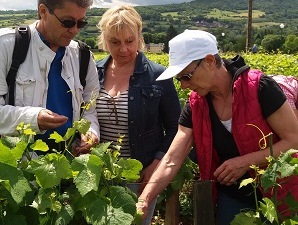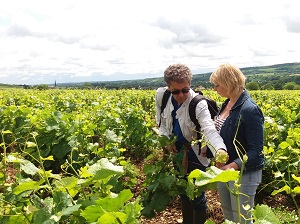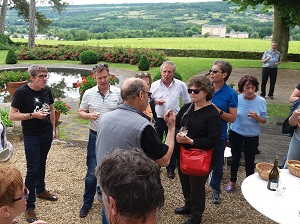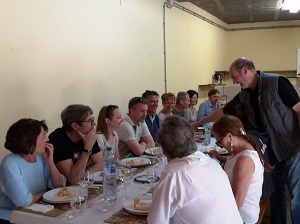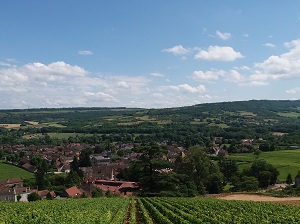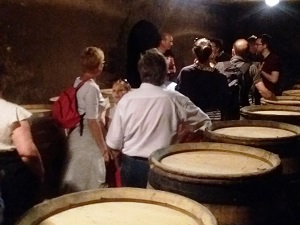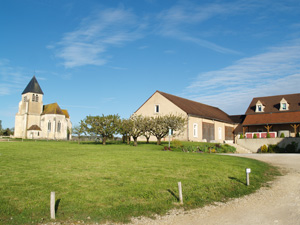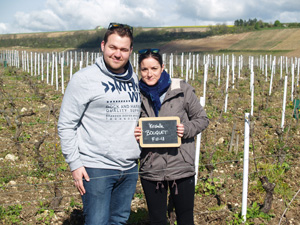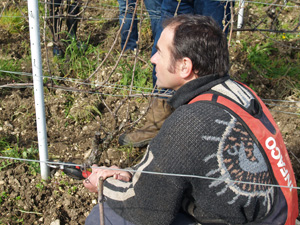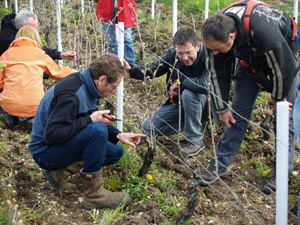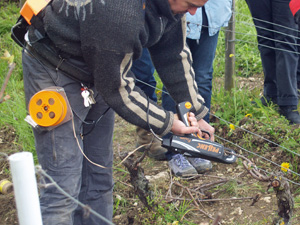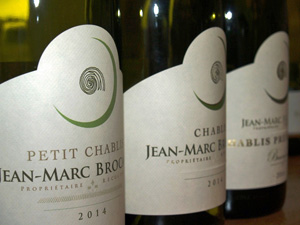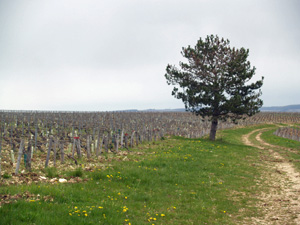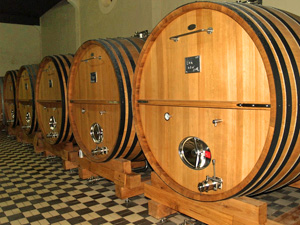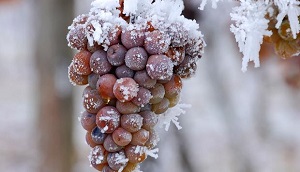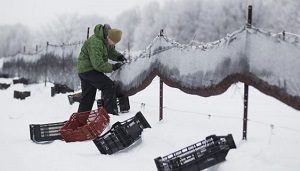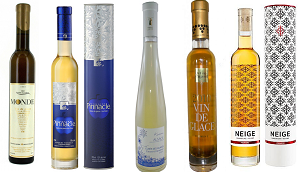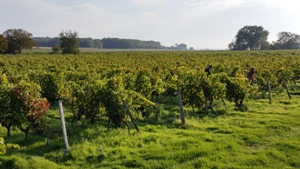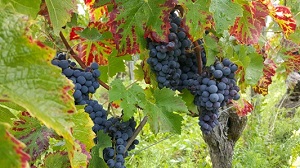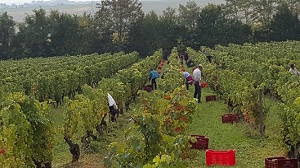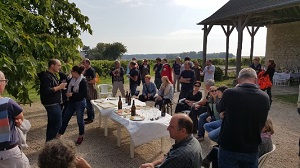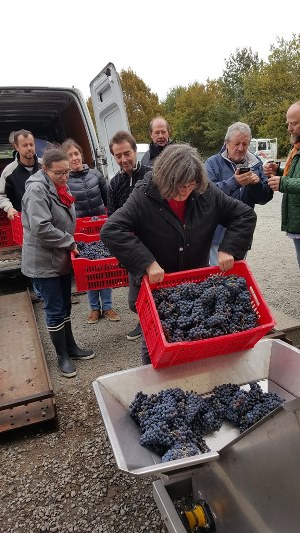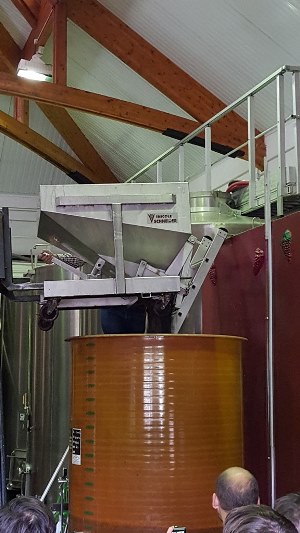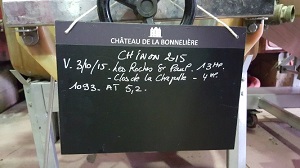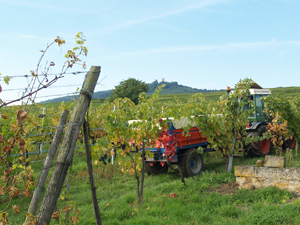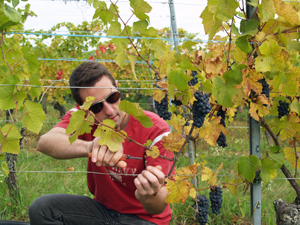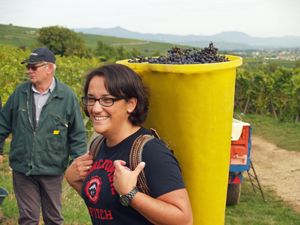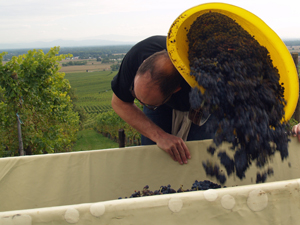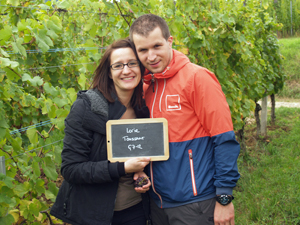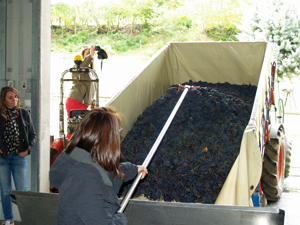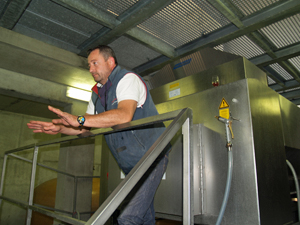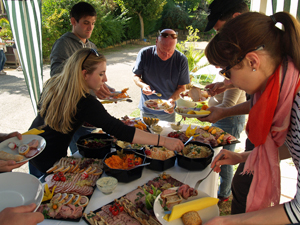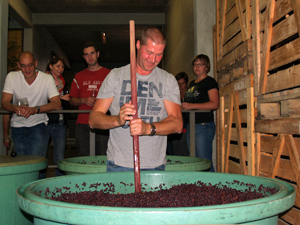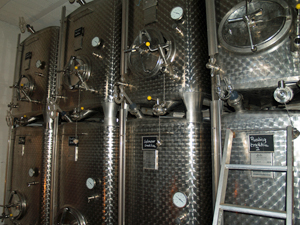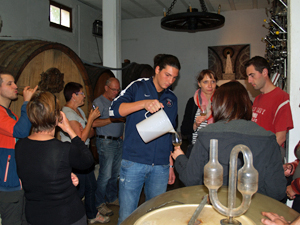As we were setting up on Saturday for the
Harvest Experience Day with Marie-Pierre and Eric, the winemakers at Domaine la Cabotte, we looked out at the surrounding vineyards and noted how dry the soil was and how warm it was despite the early hour. The team of harvesters were already at work. With the heat of the summer, the harvest started earlier than usual, and the winery is trying to get the grapes in more quickly to try and keep as much juice as possible for this harvest that will be small in quantity. The Gourmet Odyssey apprentice harvesters were therefore very welcome to lend a helping hand!
Over a coffee and croissant, we listened to Eric quickly introduce us to the winery. We then headed into the vineyard just below the winery building to harvest the clairette grapes before the rain arrived, which was forecast for the end of the morning.
As Eric explained, normally that white grapes such as the viognier and clairette are picked first, then the red grapes such as the syrah, moruvèdre or grenache. This year, the high temperatures in July and August meant that the harvest started on the 25th August, some 2 weeks earlier than a typical year, and with the red grapes.
The night time temperatures have also not been cooling as much as they would normally in September, meaning that the maturity is progressing very quickly. The harvest usually spans over almost a month, but all will be finished by Monday the 11th September, meaning that the whole harvest will have taken just two and a half weeks. If we wait any longer, the heat will have dried the grapes out, meaning less juice, and therefore less wine.
All of the red grapes have now been harvested and there is just the clairette left, which has been allotted to us. The clairette that we picked is not used for the usual white wine, but for a wine that will be made and aged in a large clay amphora, something that the winery has been experimenting with for a couple of years now. For making wine this way, we’re looking for a more ripe grape that has less acidity than for a classic white wine where you need more freshness. That’s why these grapes had been left to the end.
It was therefore up to us to pick a good harvest for Marie-Pierre and Eric, both of whom are particularly passionate about this wine. The secateurs were distributed, and then we split up among the vine rows.
The grapes were of a very good quality, making our work that much easier. We didn’t need to sort the grapes whilst picking, as all the grape bunches were in good condition. However we had to take our time as the colour of the grapes were camouflaged with the leaves. We therefore first stripped away the leaves to make it easier to see the grapes and cut the stems.
The buckets quickly filled up, and as Eric and a few courageous volunteers emptied them into the trailer, the conversations abounded regarding the grape varietals, weather and the early harvest. Before we knew it, we had reached the end of the row, and just in time, as the rain started to fall. Along with the team of harvesters next to us, we had enough grapes to fill the press.
We followed the tractor and trailer full of the precious harvest back to the shelter of the chai. Here we saw how the grapes were emptied into the press. Eric then gently rotated the press to ensure that the grapes were evenly spread in the press and to make place for the rest of the grapes. Once it was full, Eric set a gentle programme during an hour and a half to extract the juice as gently as possible which helps preserve the aromas.
We had earned our aperitif and enjoyed it with the hum of the press in the background. Marie-Pierre brought out some homemade savoury cake to accompany the Colline, a very lively white wine. We also tasted a previous vintage of the white wine that is made in the amphora to see how the grapes that we had harvested in the morning might end up.
We tasted the red wines from the winery over lunch, prepared by a local restaurant, Au Temps de Vivre in Uchaux. We talked with Eric, Marie-Pierre and Jacqueline about the 2017 vintage which will be small, but should be of a good quality. We’ll be able to see for ourselves during the Vinification Experience Days early next year!
By the time we had finished our meal, the press had finished, and so we saw how the pressed juice is pumped into the vat. It will stay there for a couple of days to allow the solid particles to settle in the bottom of the vats, before the clarified wine is pumped into another vat where it will start the two week fermentation process. The skin, pips and stalks that remained in the press were removed and will be sent to the distillery to make liqueur.
While the press was being cleaned, we made the most of a dry patch, and went to the vineyard where our adopted vines are located to see how they had fared since the last Discovery Experience Day. After taking a few photos, we returned to see if the vat had been filled with the juice from our harvest.
Eric explained what happens during the first days of fermentation and how the grape juice transforms into wine. We then finished the day answering many questions about biodynamics, a way of making wine that Marie-Pierre and Eric are expert in and passionate about.
We could stay listening to Eric talk about his terroir and vines for hours, but all good things must come to an end. At least a few bottles, taken home in the boot of the car, will allow the pleasure to last a little longer!
